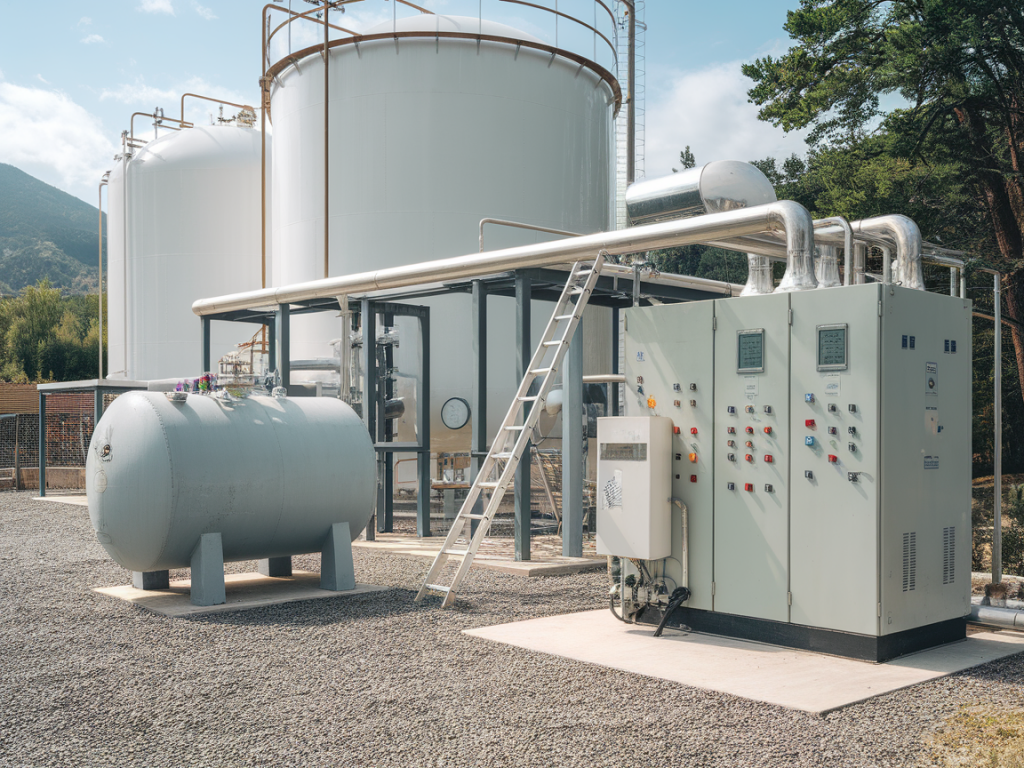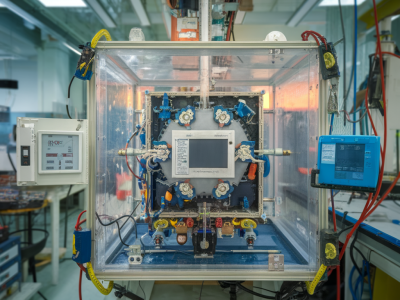
When we talk about the future of clean energy, one term seems to pop up more and more often: green hydrogen. Labeled by many as the "fuel of the future," green hydrogen is gaining traction as a revolutionary solution to decarbonize some of the world's most challenging sectors. But what exactly is green hydrogen, and why is it so transformative? In this article, I’ll delve into why green hydrogen is capturing so much attention and explore its potential to reshape our energy systems.
What Is Green Hydrogen and How Is It Made?
Simply put, green hydrogen refers to hydrogen gas produced through a process called water electrolysis, using renewable electricity from sources like wind, solar, or hydropower. During electrolysis, water (H2O) is split into hydrogen (H2) and oxygen (O2). The key to this being "green" lies in the energy source: if the electricity comes from renewable energy, the entire production process generates zero greenhouse gas emissions.
It’s crucial to differentiate green hydrogen from other forms of hydrogen, such as "gray hydrogen" (produced from natural gas with significant CO2 emissions) and "blue hydrogen" (similar to gray, but with carbon capture and storage technology used to reduce emissions). Green hydrogen, by contrast, is entirely emission-free, making it a cornerstone of sustainable energy strategies.
Why Is Green Hydrogen So Important?
One of the most exciting aspects of green hydrogen is its versatility. Unlike other renewable energy carriers, hydrogen can play multiple roles across various industries and applications:
- Power Generation: Hydrogen can be used to store and supply energy, especially during peak demand times, addressing the intermittency issues of wind and solar power.
- Transportation: Green hydrogen fuels hydrogen fuel cell vehicles (HFCVs), which only emit water vapor — an eco-friendly alternative to diesel and gasoline vehicles.
- Heavy Industry: Industries like steel, cement, and chemical manufacturing are notoriously difficult to decarbonize. Green hydrogen provides a pathway to reduce emissions in these high-carbon sectors.
- Heating: Hydrogen can also replace natural gas in residential and industrial heating systems, transitioning away from traditional fossil fuels.
In essence, green hydrogen offers a clean, flexible, and scalable solution to some of the world’s most pressing energy challenges.
Breaking Down the Challenges
As promising as it sounds, scaling up green hydrogen is fraught with challenges. Here are a few key hurdles we need to address:
- Cost: Currently, green hydrogen production is significantly more expensive than its gray or blue counterparts. This is largely due to the high cost of renewable electricity and electrolyzer technology.
- Infrastructure: Existing infrastructure for transporting, storing, and using hydrogen is limited. For widespread adoption, we need substantial investments to build pipelines, storage tanks, and fueling stations.
- Energy Efficiency: The electrolysis process itself consumes a lot of energy. Ensuring that this energy comes entirely from renewables is crucial to maintaining a low carbon footprint.
Despite these challenges, governments, industries, and innovators worldwide are stepping up their commitments to making green hydrogen viable.
Who’s Leading the Way?
Thankfully, the green hydrogen revolution is not just a lofty idea — it’s already underway. Several countries and major companies are investing in this transformative technology:
- European Union: The EU has unveiled a hydrogen strategy aiming to install at least 40 GW of electrolyzers by 2030 to produce green hydrogen at scale.
- Australia: Known for its abundant renewable energy resources, Australia is positioning itself as a global leader in hydrogen exports, with projects like the Asian Renewable Energy Hub.
- Airbus: The aviation giant is exploring hydrogen-powered aircraft, with plans to launch its first zero-emission commercial aircraft by 2035.
- Hyundai and Toyota: In the automotive world, these companies are deeply invested in HFCVs, producing vehicles like the Hyundai Nexo and Toyota Mirai.
These efforts showcase a growing momentum behind green hydrogen, with both public and private sectors recognizing its potential to drive a sustainable energy economy.
What Does the Future Hold?
The International Energy Agency (IEA) has called hydrogen a "versatile energy carrier," and the World Economic Forum believes it could account for up to 24% of global energy demand by 2050. But to reach that point, we need bold action and international cooperation:
- Scaling up production: Developing larger, more efficient electrolyzers will reduce costs and make green hydrogen more competitive.
- Policy support: Governments must implement incentives, subsidies, and carbon pricing to encourage green hydrogen innovation and adoption.
- Investment in R&D: Continuous research is needed to enhance storage solutions and improve hydrogen’s overall efficiency.
One particularly exciting area of research is the integration of surplus renewable energy into hydrogen production. Countries like Germany and Japan are experimenting with converting excess solar or wind energy into hydrogen during off-peak hours, effectively "storing" the energy for later use.
How You Can Be Part of the Green Hydrogen Revolution
If you’re not in the energy industry, you may wonder how this impacts your life or what role you can play. Here are a few ways to get involved:
- Stay informed: Keep an eye on local and global developments in green hydrogen. Knowledge is power!
- Advocate for change: Support policies that promote renewable energy and green hydrogen projects in your region.
- Choose eco-friendly technologies: When purchasing a vehicle or home energy system, consider options powered by hydrogen or other renewables.
As with any transformative movement, the shift towards green hydrogen requires collective action—from governments and corporations to individuals like you and me. By staying engaged and making conscious decisions, we can help accelerate the adoption of this promising clean fuel, paving the way for a greener future.

